Yoga for your tummy
Yoga is a technique dating back thousands of years, its principles are based on creating harmony between the mind, body and spirit. Many yoga postures or asanas help to treat digestive problems because the exercises focus on the health of the stomach and surrounding organs.
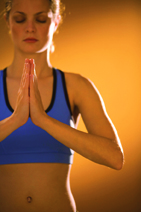
+ Yoga is a method of learning that originated in the Orient thousands of years ago through the practice of postures and techniques aimed at uniting the mind, body, and spirit through exercise, breathing, relaxation and meditation. The practice aims to improve your health, increase your resistance, and develop your mental awareness to unite your consciousness to the Universe's energy. The exercises unify your inner-energy and physical state, helping to fight stress and digestive ailments by harmonizing internal peace.
Treating digestive problems not only involves relieving symptoms, but also releasing anxieties, worries and nervous habits that prevent our unconsciousness from unifying with our essence, which is a basic principle in the teaching of yoga.
It's best to practice yoga for 20 minutes in the morning, before starting your day, or in the evening, at the end of it. It's also advised to begin these exercises with an instructor who can help familiarize you with the techniques.
GETTING READY
Before practicing yoga postures or asanas , you should prepare your body through a series of stretching exercises to warm up your muscles and to release tension.
The Rocking chair
This posture is made up of a series of movements to stretch the body before practicing other asanas . As the name suggests, this position helps to balance tension and to tone the muscles, while at the same time massaging the spinal column. It's recommended to use a moderate rhythm, inhaling through the nose when you move backward and exhaling through the mouth as you move forward.
This complete exercise should be repeated several times to stretch out and warm up the muscles.
1. Sit on the floor (preferably on a padded mat). Keep your chin pressed to your chest and with your hands behind your knees bring the body slightly forward to give you the momentum to sway backward.
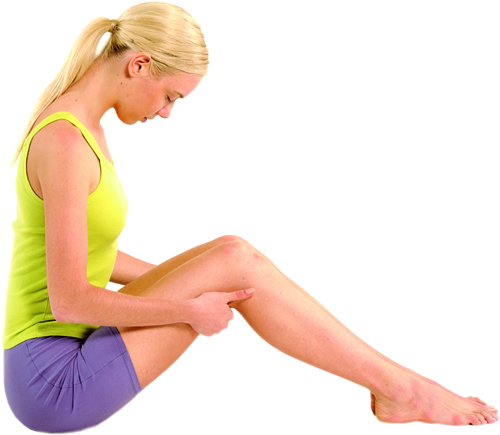
2. Lift your legs and bring your body backward. With very slow and controlled movements, place your back on the floor. You should use the muscles of your abdomen to control your movements. You should feel each segment of your backbone pressing against the floor.
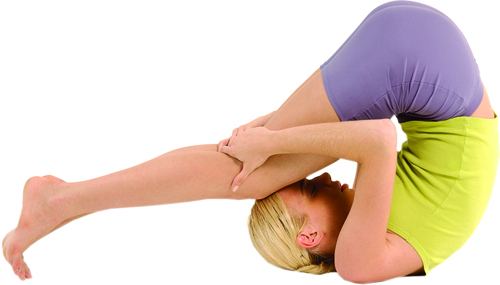
3. Taking advantage of your body's momentum by bringing your body backward, try to touch the floor with the tips of your toes. Return to an upward position, using the strength of your abdomen. Repeat several times. This helps to loosen your spinal column and muscles.
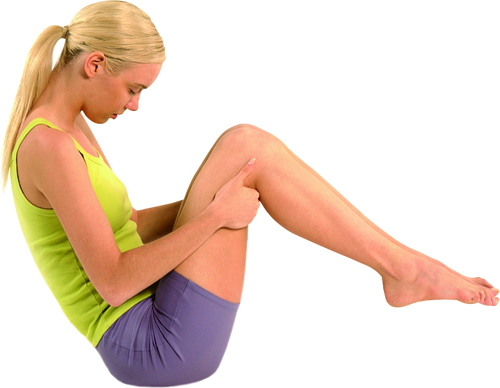
THE SUN SALUTATION OR SURYA NAMASKAR
This is one of the most complete exercises in yoga. It not only helps to stretch out the body but harmonizes the entire body and calms the nerves that upset the digestion.
The Sun Salutation limbers up the whole body in preparation for the yoga asana postures because it uses the spinal column, arms and legs.
If practiced daily, this pose will increase your body's stamina and blood circulation, while balancing the respiratory, digestive and nervous systems. On a mental and spiritual plane, it helps to balance your nerves. This is why it is beneficial for the digestive system.
1. To begin the Surya Namaskar or Sun Salutation (which is considered one of the most complete yoga exercises) stand on your feet, with your back straight, ankles together and buttocks tight. Bring your hands to the chest with the palms together, take a deep breath and hold it in for a moment. Next, exhale.

2. Lift your arms above your head as you are taking a deep breath, separate the elbows, open your hands and arch your back, with your head back. Exhale.

3. Bend your body forward without bending the knees. Relax your neck and touch the floor with your hands, if you can.
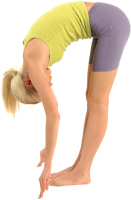
4. In a squatting position, take in a deep breath and extend your right leg back, bending your left knee into your chest. Exhale, with your arms to your sides.
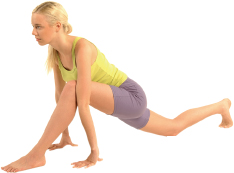
5. With your hands on the floor, extend your left leg backward to join the right leg and put the weight of both legs on your toes, with your ankles together and your arms stretched out.
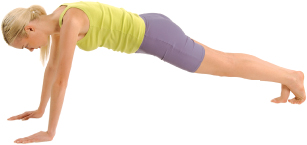
6. Exhale and bend your arms so that your torso touches the ground, keeping your hips elevated for a few seconds. Your body's weight should be distributed between your chin, chest and knees.

7. Inhale and lean on the lower part of your body, while you lift up your chest and shoulders and bend your head backward, with your eyes closed.
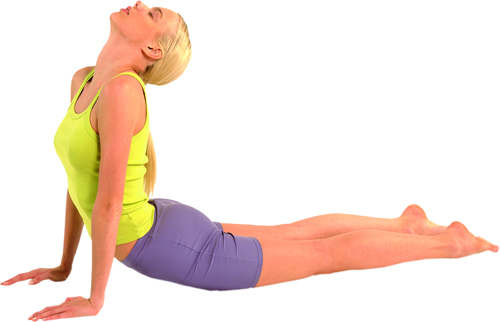
8. Leaning on the palms of your hands with your feet on the ground, lift your hips up and make a bridge, with your legs extended and your head relaxed (the Tent position).
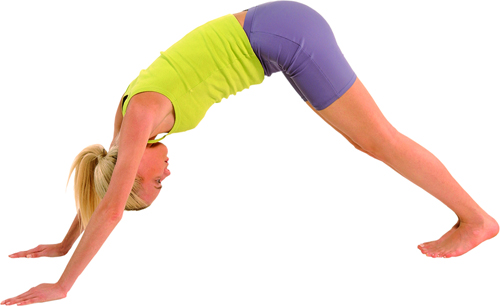
9. Repeat step 4, this time with your left leg back and your right knee bent into the chest.
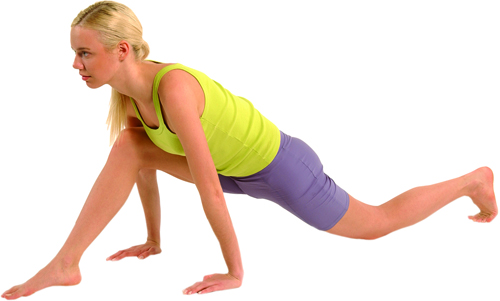
10. Repeat step 3 (torso lowered, head relaxed, legs extended and leaning on the floor with your hands, if you can). Stay in this position for a few seconds.
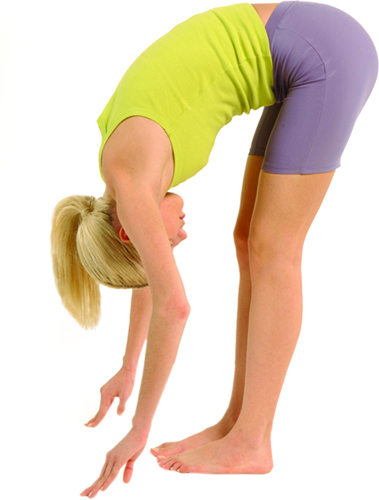
11. Inhale, lift up your body and repeat step 2 (head backward, back arched and arms extended above your head).

FINAL POSITION
Return to the first position, with your back straight and your hands with your palms together on your chest. The philosophy of yoga considers that this hand position means peace between the body, mind, spirit and Universe.
POSES THAT BENEFIT THE DIGESTIVE SYSTEM
Other than the Sun Salutation there are yoga asanas that can benefit the digestive system. When practiced daily you may see improvements in your digestive health.
The Seated forward bend
This pose uses slow movements that help indigestion and soothe painful symptoms, at the same time stretches the vertebrae and stimulates blood flow from the back.
1. Begin by sitting, with your legs together and stretched forward. Keep your back straight and your arms on either side of your body, supporting them on your palms. Your body should form a 90 degree angle.
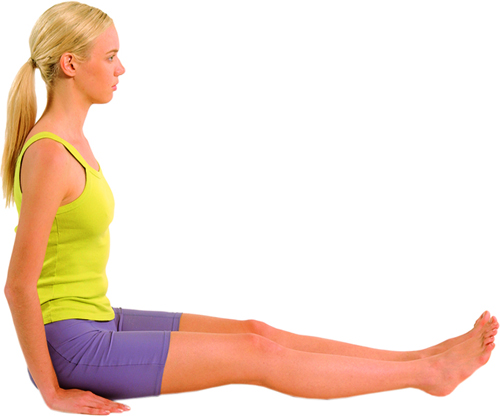
2. Take a deep breath through the nose and stretch your arms above your head as high as you can, stretching the spine. Do not arch the back.
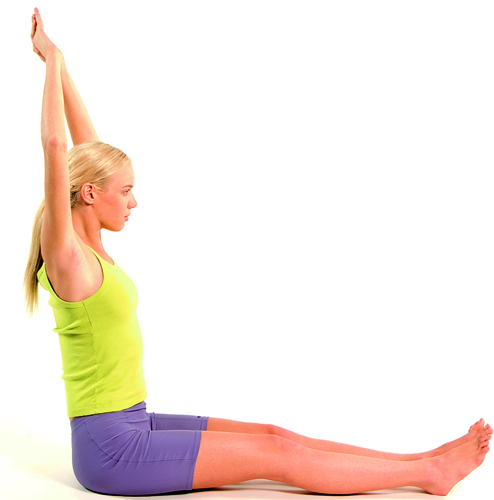
3. As you exhale bring your chest toward your thighs. Bring your hands to your feet and, if you can, wrap your fingers around them. Breathe comfortably while you exhale, lowering your torso as far as you can. It's ideal to bring your abdomen to your thighs. The idea is to continue right down and hold on to whichever part of your legs or feet you can comfortably reach. You can also place a cord behind your feet and grab onto it instead of holding your feet.
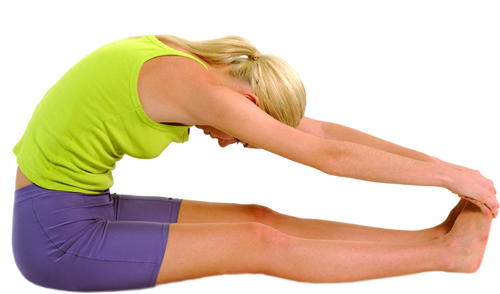
To get out of this position, continue by reversing the steps: inhale, bringing the back straight and your arms above your head. When you exhale bring your arms to your sides, with your palms pressed against the floor.
HEAD PRESSED TO THE KNEE
This pose may reverse indigestion and constipation while soothing the entire body. Sit on the floor with your legs stretched apart and your feet pointed at the ceiling. Bend your left leg until the bottom of the foot is pressed against the inner part of the right thigh. Inhale; lift your arms above your head. When you exhale bring your chest down to your right leg and grab hold of the foot, ankle or shin. Inhale and exhale, trying to lower the head down further, bringing your forehead to your knee. Get out of this position slowly and repeat with your other leg.
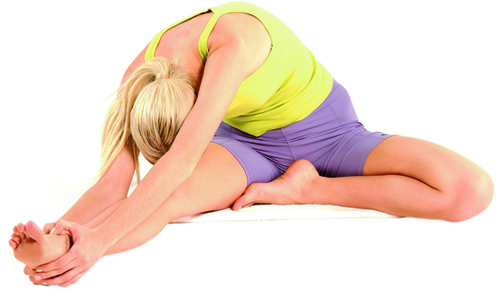
The Twist
This asana stimulates the liver, bile duct, kidneys, pancreas, the intestines and the stomach. The stretching movements help to prevent straining.
1. Kneel down on the floor, with your legs together, resting on your heels. Place the palms of your hands on your thighs. Keep your back straight, with your chin and your eyebrows relaxed.
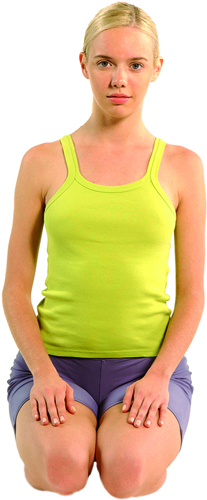
2. Lift up your hips and sit on the right of your feet. Keep your hands on your thighs and your shoulders relaxed.
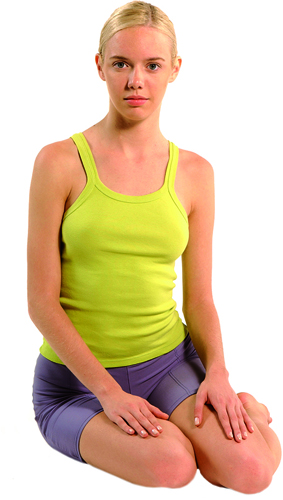
3. Lift your left leg over your right, placing the foot on the floor. Stretch your left hand behind your back, and twist around to the left. Place your right hand on your right foot.
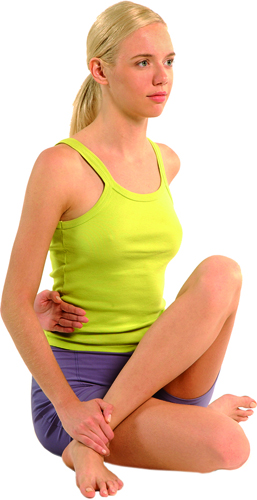
4. Turn your head, shoulders and torso to the left, without lifting your left foot up from the ground. Continue breathing and as you exhale gently twist as far as possible to the left.
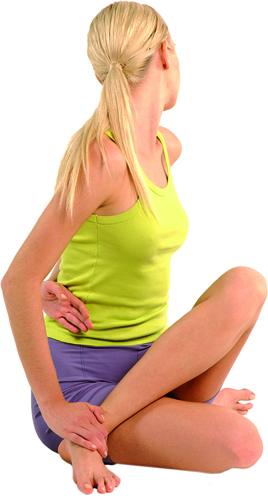
5. If you can, without straining yourself, wrap your hands around your leg, below your left knee. Stay in this position for a few minutes, breathing normally. Come out of this position and repeat on the other side with your right leg and arm.
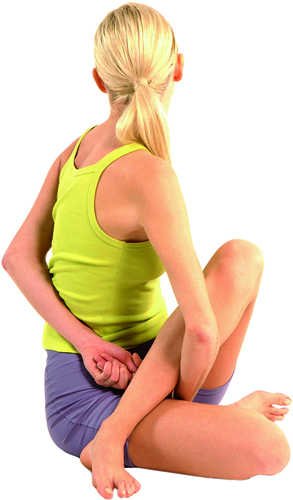
The Plough
This pose massages the internal digestive organs, improves digestion and helps to relieve strains. It also produces a relaxing mental state to fight stress, a key factor in digestive problems.
1. Lie on your back, with your legs together, arms down by your sides next to your body and palms of your hands pressed against the floor. Bring your chin toward your chest and press your back muscles to the floor. Inhale through your nose and raise your legs up until they make a 90 degree angle with your torso. Exhale, then inhale and lift your hips off the floor, supporting your back with your hands.
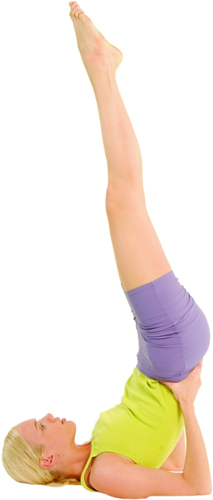
2. Without bending your knees, stretch out your legs by bringing them behind your head, until your toes touch the floor. Your arms should stay forward, with the palms of your hands pressed to the floor. Stay in this position breathing slowly and deeply. Next, inhale through your nose and slowly lower your spine and then your legs to the floor while you exhale. Concentrate on how each segment of your backbone returns to the floor.
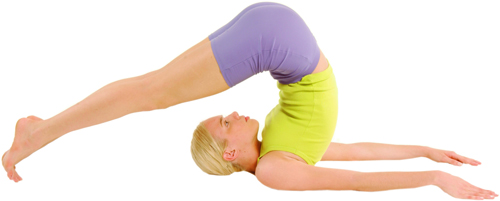
GENTLE EXERCISE
Yoga is a discipline designed to improve your flexibility and harmony. The exercises use gentle movements without straining your body.
When practicing the asanas remember not to strain yourself. There is no need to push yourself too far.
Through time and willpower, you will improve your body's health naturally and get in tune with your body.
The Bow
This posture focuses on your abdominal area, which ends up being the only point resting on the floor. This produces a deep internal massage on the digestive organs, helping to prevent constipation.
1. Lie down on your front, head down and keeping your legs spread about the width of your hip. Inhale and bend your knees up, then reach back with your hands and clasp your ankles. Bring your feet together until your big toes touch. Exhale.
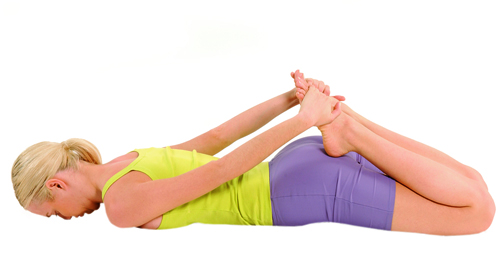
2. Inhaling, raise your head and chest and simultaneously pull your ankles up, lifting the knees and thighs off the floor. Arch backward and look up. Stay in this position breathing through the thorax. Release this position by returning gently to the first position.
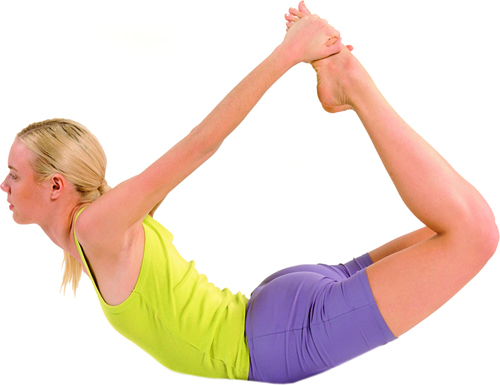
The Child
As the name suggests, this asana is simple and produces a sense of well-being. It helps you relax and makes you feel good all over, helping to soothe stomach pains.
1. Kneel down and sit on your feet with your heels pointing outward. Your knees should be separated, about the width of your hips. Inhale as you lift your arms above your head and exhale while you bring your torso down to your thighs. Place your forehead, palms of your hands and forearms on the floor, while keeping your shoulders relaxed.

2. Next, bring your arms behind and keep them relaxed next to the body. Stay in this position for however long you like, breathing softly and keeping your mind on your spinal column.
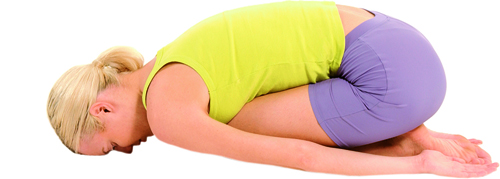
THE TRIANGLE POSE
This simple pose increases your body's flexibility. It also may help to stimulate blood flow in the abdominal area.
1. Stand with your feet well apart. Stretch your arms out at shoulder height, with the palms of your hands faced downward.
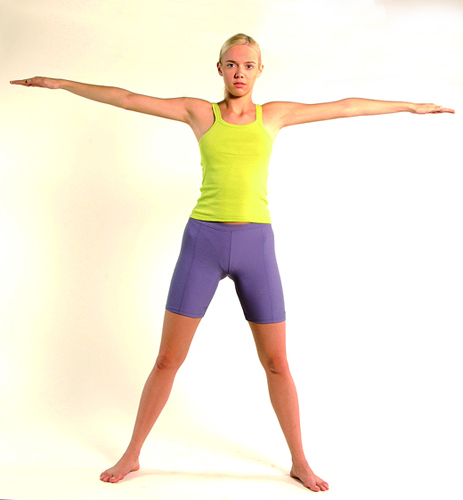
2. Inhale through the nose and bend your torso to the left. Slide your left hand down your left leg and hold on to the lowest part you can reach. To increase the stretch, bring your pelvis slightly to the right. Stretch your right arm above your head with your palm facing forward. Turn your head upward, looking at your hand above. Stay in this position breathing slowly.
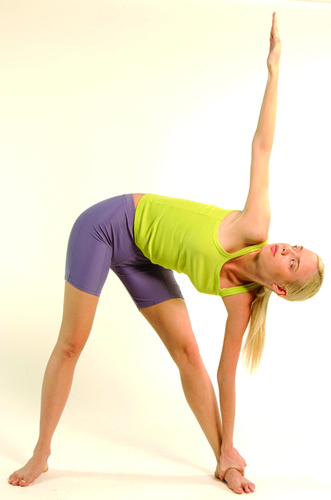
Release this position and repeat on the other side.

Comment about this article, ask questions, or add new information about this topic: